How Far Can a 2024 Toyota Prius Prime Go on Electricity Alone?

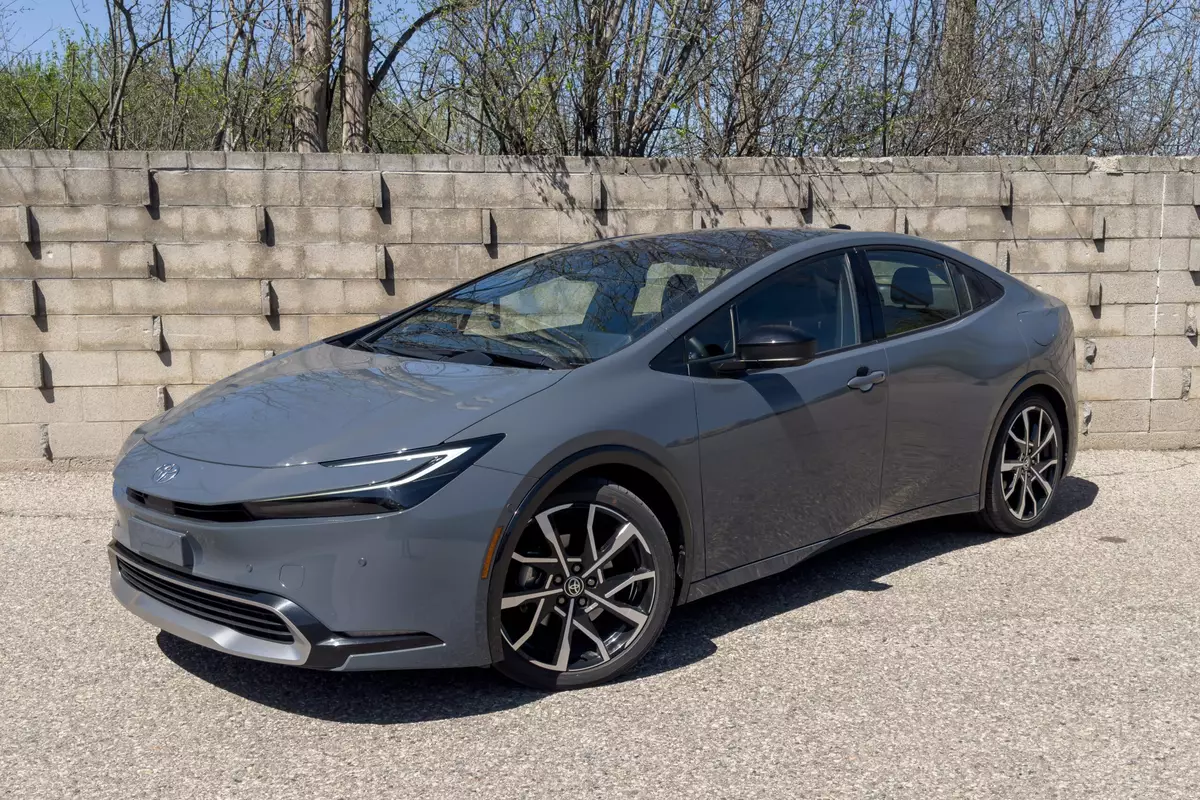
While a lot of automakers are charging headlong into the full electrification of their lineups with electric vehicles to challenge the domination of Tesla, Toyota has long advocated for a slower, more balanced approach focusing first on hybrid technology. Part of it is Toyota insisting that battery technology simply isn’t ready for widespread adoption of EVs, and the other part of it frankly is Toyota trying to extend their investment in hybrid powertrains for as long as possible by trying to convince us all that hybrids are what we really want, not full EVs.
Regardless of its corporate motivations, for a lot of people, plug-in hybrid electric vehicles do make a lot of sense: Stuff a bigger battery in your hybrid to enable extended electric-only operation, make it rechargeable from a wall outlet, but keep the gas engine in the car so it can keep going when the battery runs out.
Related: 2023 Toyota Prius Prime Review: Sportier for Sure, But Why?
That’s what the latest Prius Prime does. It’s more Prius plus than Prime, however, as Toyota has added significantly more electric range than you’ll get with a standard Prius — and at much higher speeds. As with all plug-in hybrids we test, we were curious to see just how far the Prius Prime can go on electric power alone with the gas engine off and the car operating like an EV. Toyota says the ‘24 Prius Prime SE can get up to 44 miles of electric range, while the XSE and XSE Premium trims can go up to 39 miles on electric power. I had a loaded XSE Premium model for a week of testing, so I set out to see if it could achieve its stated 39 miles of electric range — or if it could, in fact, do better.
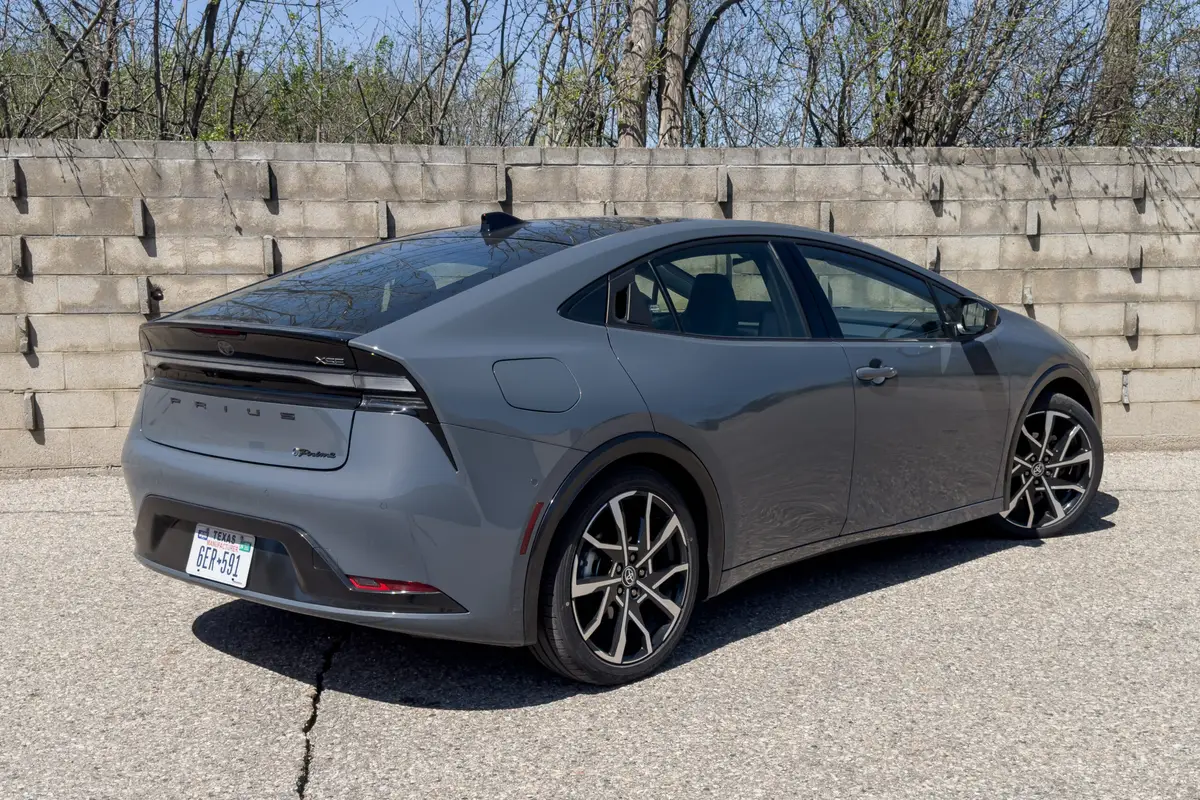
The Ride
The vehicle for this test is a 2024 Prius Prime, the swoopy, sexy plug-in version of the Prius (still boggles my mind to actually write those words) that was redesigned for the 2023 model year. Toyota took the latest and greatest Prius (and we mean that; the newly redesigned model is a fantastic car in many ways), swapped out the lithium-ion battery pack for a much larger 13.6-kilowatt-hour lithium-ion unit, gave it a more powerful electric drive motor, kept the 2.0-liter four-cylinder gas engine and continuously variable transmission, and created a vehicle that makes 220 horsepower total. Toyota says the Prius Prime can accelerate from 0-60 mph in 6.6 seconds, a whopping 3.6 seconds quicker than the previous-generation Prius Prime. When the battery is depleted and the 2024 Prius Prime is operating as a gas-electric hybrid, it gets an EPA-rated 52 mpg combined in the SE and 48 mpg combined in the XSE and XSE Premium, making it one of the most efficient gas-powered vehicles of any type on the road today.
There are Normal, Sport and Eco drive modes, but there’s also EV mode and Auto EV/HV mode for the hybrid system. EV mode lets you operate on electric power until the battery runs out, while Auto EV/HV mode also favors electric operation but will supplement the electric motor with the gas engine when more power is needed.
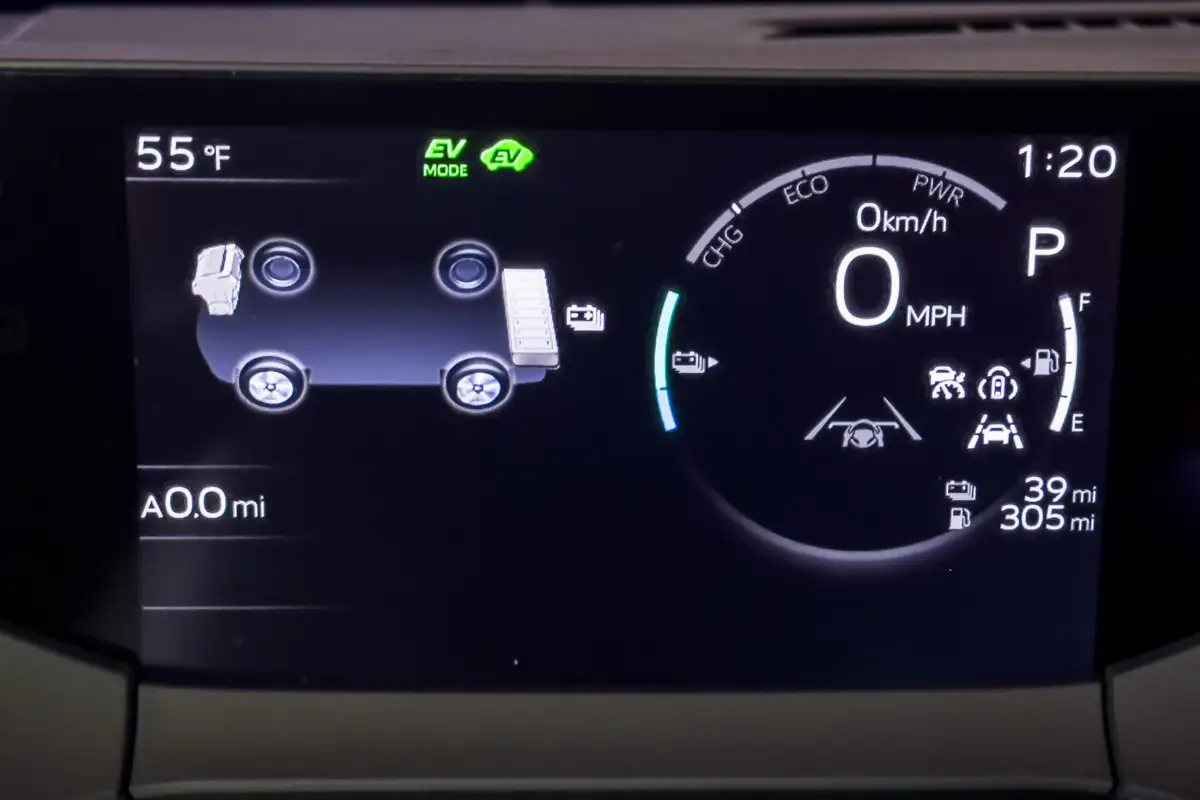
Inside, the new Prius is quite different from the prior model. The very steeply raked windshield and swoopy roofline make getting in and out of the front or rear seats a contortionist act, and backseat room is not what it was in prior versions. Neither is cargo room, which has decreased from 13.1 to 10.8 cubic feet, according to Cars.com measurements. Toyota has sacrificed utility for style in the new Prius, hoping instead to guide you to a new Corolla Cross Hybrid if you’re really looking for room plus efficiency. The new Prius is meant to be more sporty, engaging and entertaining in its driving characteristics and looks, and it delivers on both.
The cabin is also much more attractive, with an unusual location for the gauge cluster in relation to the steering wheel. You don’t look through the steering wheel at the gauges like you do in most cars — you look over it — which takes some getting used to for people who like to position their steering wheel up high. I don’t mind the layout at all; it feels like you’ve got a head-up display, but it’s embedded high in the dash. The infotainment system’s large 12.3-inch touchscreen is running Toyota’s latest software, but the system is a mixed bag, as well; thankfully, wireless Apple CarPlay and Android Auto are standard.
The as-tested price of our XSE Premium test car came to $42,510 (all prices include destination), but the base SE starts at $34,070, and both are more than reasonable sums these days for a new car that can do what the Prius Prime can. Consider that Toyota’s only fully electric model, the bZ4X, starts at $44,420, or more than $10,000 more than the base Prius Prime, and you can see why a number of Toyota buyers are opting for the Prius.
The Route
On a beautiful spring day recently, I pointed the Prius onto my PHEV range-testing route, one that stretches from my home office in Ann Arbor, Mich., to just outside Detroit in Dearborn, Mich. The route avoids major interstate highways, but combines a mixture of stop-and-go urban streets with higher-speed, four-lane divided boulevards. The highest speed limit is 55 mph, and speeds are always kept to within 5 mph of the posted limit. Acceleration is moderate (no super-slow hypermiling), climate control is off, tires are inflated to the manufacturer-recommended cold pressures and no cruise control is used. EV mode is employed, and I try to drive as normally as possible, keeping up with traffic but not making aggressive maneuvers. Normally, I would use the maximum regenerative braking setting, which in a Prius is “B” on the transmission gear selector. I had to leave that off, however, for reasons I’ll get to in a moment. With a full tank of gas and the windows up for optimal aerodynamics, off I went!
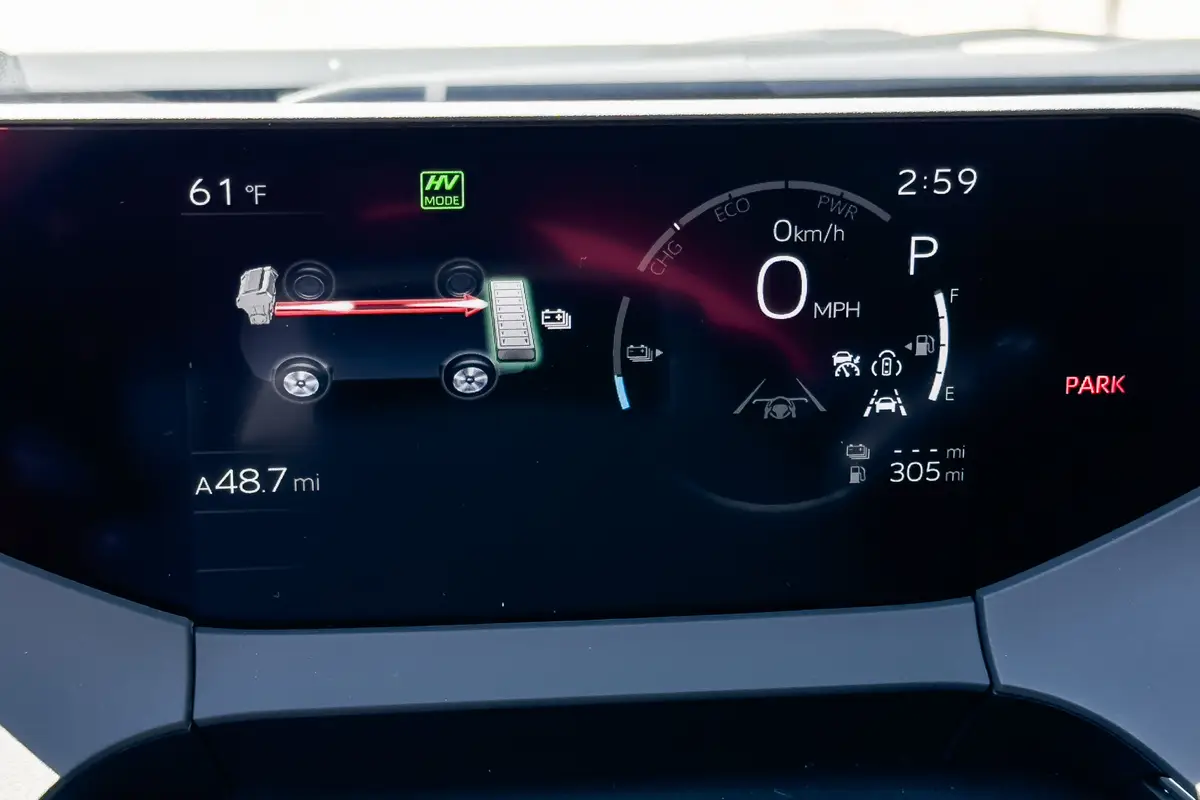
The Results
From a full charge at the start, my indicator was telling me I had 38 miles of electric range. However, when EV mode finally stopped and the engine kicked on, I had traveled a total of 48.7 miles, nearly 25% more than the car’s 39-mile rating. That’s a significant over-performance on range and opens up the Prius Prime for consideration among people who perform the standard 20-miles-or-less-each-way commute from home to work and back and want to do it on electric power. Recharging the Prime can be done in 11 hours on a standard 120-volt household outlet, or in about four hours on Level 2 service. The Prime’s Level 2 charging time isn’t as quick as some competitors, but chalk that up to the car’s rather underwhelming 3.5-kilowatt onboard charger.
It is entirely possible that the Prius Prime can actually get more range out of the battery than this, as I did not use the maximum regeneration B setting during this test. A day before running this test, I ran an errand in the Prius Prime, and when I was a mile from my home with a full charge on the battery, I decided to put the car in B mode to maximize brake regen and see how it reacted. To my surprise, the gas engine popped on and stayed on as I decelerated toward a stoplight even though the car was still in EV mode. It then continued to run while idled at the light, much to my confusion.
As of this writing, Toyota has not said why this may have happened, but my suspicion is that the Prime did something I’ve observed in some other PHEVs: It ran the engine to simulate more aggressive regen by using engine braking instead. When the battery is full, there’s nowhere to dump extra energy from more aggressive regenerative braking, so instead of simply saying “max regen not available” as I’ve seen in some vehicles like Teslas, the Prime decided to simulate that sensation by running the engine, which I’ve seen happen in some Ford PHEVs. We’ll update this story if Toyota gets back to us with a solid explanation. I can attest that the engine did not come on when the transmission was left in “D.”
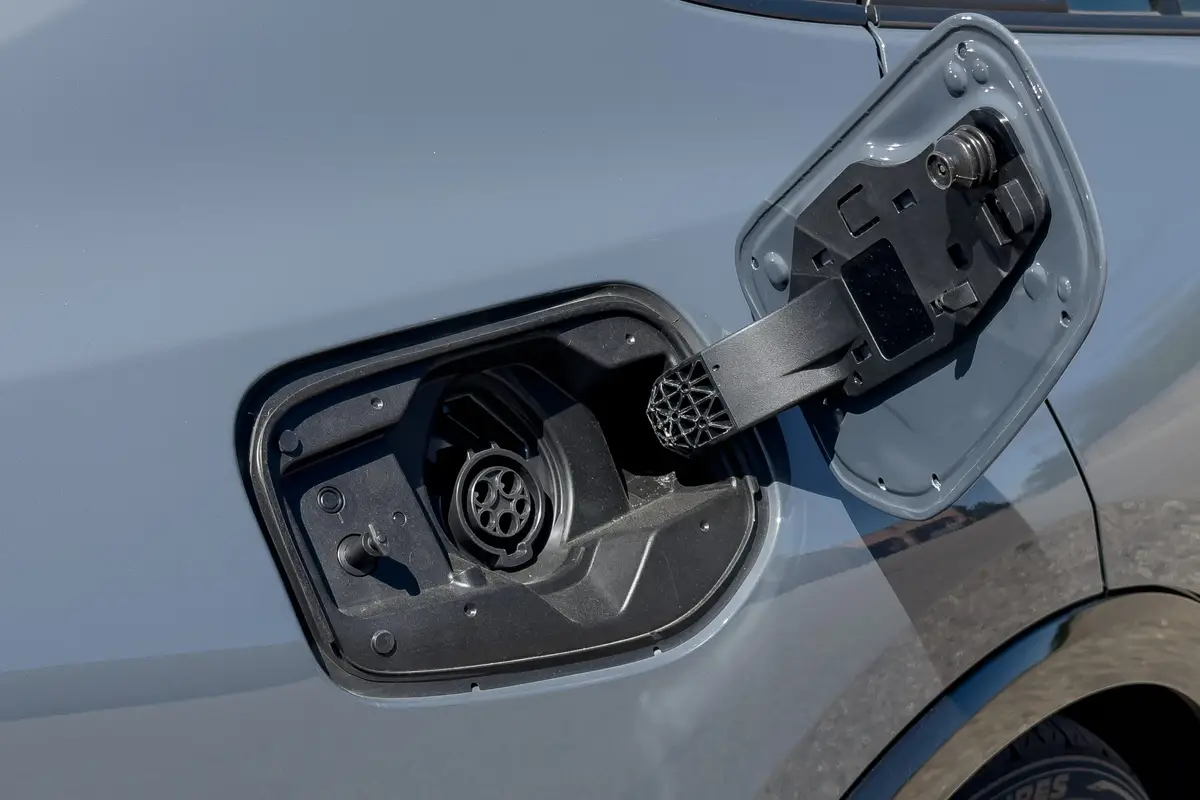
Overall, the Prius Prime is outstanding four-person transport (five is a bit of a squeeze), and with its newfound style and sporty performance, Toyota has transformed it from a homely appliance into a genuinely desirable runabout. Its starting price does represent a $5,025 price premium over the regular Prius LE hybrid, with which the Prius Prime SE matches up well in terms of specs and equipment. The EPA estimates that the average driver will save an extra $1,250 over five years by operating a Prius Prime SE versus a standard Prius hybrid, so it’s going to take a while to recoup the extra cost for the Prime. But if your commute is such that you’re likely to only ever use its electric mode, it may be worth the expense.
More From Cars.com:
- What MPG Does the 2023 Toyota Prius Get in Real-World Driving?
- 2023 Toyota Prius Review: Newly Sexy, Still Not Perfect
- Is the 2023 Toyota Prius a Good Car? 6 Pros and 4 Cons
- Up Close With the 2023 Toyota Prius and Prius Prime: Function Finally Meets Form
- Shop for a 2024 Toyota Prius Prime
Related Video:
Cars.com’s Editorial department is your source for automotive news and reviews. In line with Cars.com’s long-standing ethics policy, editors and reviewers don’t accept gifts or free trips from automakers. The Editorial department is independent of Cars.com’s advertising, sales and sponsored content departments.

Detroit Bureau Chief Aaron Bragman has had over 25 years of experience in the auto industry as a journalist, analyst, purchasing agent and program manager. Bragman grew up around his father’s classic Triumph sports cars (which were all sold and gone when he turned 16, much to his frustration) and comes from a Detroit family where cars put food on tables as much as smiles on faces. Today, he’s a member of the Automotive Press Association and the Midwest Automotive Media Association. His pronouns are he/him, but his adjectives are fat/sassy.
Featured stories

15-Year Car Loans Aren’t a Thing, But Americans Are Getting More Comfortable With Long Loan Terms

2025 Kia Telluride Review: Rougher Roads Ahead



